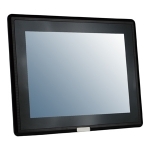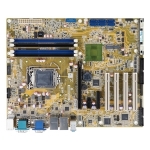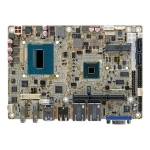Industry is traditionally slow to adopt any new Microsoft Operating System (OS). Many industrial Windows users will have no need of the many new features on offer and will be highly cautious at potential bugs or security flaws that could be lurking within. The majority of industrial products will have life expectancies of over 5 years and would have been developed around a specific Operating System. In short, it is rarely worth considering switching to a new Operating System unless you are developing a new product.
At first glance, the appearance of Windows 7 is similar to Windows Vista. However, when you start using it you will be pleasantly surprised at how fluid and quickly it runs. Interestingly, if you compare the minimum hardware requirements between Windows Vista and 7 they are almost identical. However, Windows 7 was developed from the ground up with a simple aim to be much faster than Windows Vista. This is a significant change of thinking from Microsoft, especially when considering the upgrades which were necessary when moving between Windows 98, XP and Vista. The minimum hard drive capacity for Windows 7 of 16GB is still significantly larger than Windows XP which was a mere 1.5GB. Those users wanting a trimmed down version can choose Windows Embedded Standard “Quebec”, which is based on Windows 7 code.
Multiple Core Support
Similar to Windows XP and Vista, Windows 7 follows suit with the number of supported processors. The Professional, Ultimate and Enterprise editions all support two physical processors regardless of the number of cores within each processor. However, unlike Windows Vista and XP Windows 7 supports up to 256 cores and scales in a linear fashion.
Windows 7 64-bit
Excluding Windows 7 Starter, each of the editions will ship with 32-bit and 64-bit variants. The 64-bit versions will also support 32-bit applications. Although 64-bit computing has some significant benefits, if the applications or hardware does not fully support this , you should stay with 32-bit to avoid unexpected errors.
Advantages and Disadvantages of 64-bit
- The 32-bit compatibility mode has overheads and running 32-bit applications within a 64-bit environment may be slower!
- Your older 16-bit applications will no longer run. DOS applications are a no-go as far as 64-bit is concerned.
- It is possible to address more than 4GB of system memory. This can provide some significant speed improvements for demanding systems. If your application is only 32-bit it will only see 4GB.
- You will need a compatible Windows 7 64-bit driver. If you are running older or specialized plug-in cards or peripherals, you will find they no longer work.
Windows 7 XP Mode
To make use of this feature, you need to download and install both Microsoft Windows Virtual PC and Windows XP Mode.
The technicalities surrounding XP mode are a little vague and first impressions could give false hope of providing a fully compatible Windows XP machine. The XP Mode is designed to support legacy software applications only and cannot see or interact with most hardware. If any hardware was plugged into the machine such as a PCI Data Acquisition card, the virtual XP Mode would be oblivious to it.
This feature may be of use if you have a standalone legacy application which you are unable to run within Windows 7 which would otherwise have to be run on a separate PC.
Solid State Disk (SSD) Support
Windows XP and Vista treat an SSD as a mechanical hard drive. To support the growing popularity of SSD being used within systems, Microsoft has added a number of features into Windows 7 to improve the life expectancy and performance of Solid State Disks.
- Disk activity has been optimized to reduce the amount of disk writes and cache flushes. All SSDs have a limited number of write/erase cycles, so this reduction improves the life of the device as well as improving the speed of operation.
- Disk defragmentation is disabled when a device is recognised as an SSD. As data is written and erased from a standard hard drive it becomes fragmented over time. Defragmentation relocates data sequentially on the drive, so the head does not have to travel as much. This feature is not only unnecessary on an SSD, but the additional reading and writing of the process will shorten its life.
- Windows 7 disables Superfetch, ReadyBoost and boot / application launch prefetching. These features were added to Windows Vista to improve the performance of conventional hard drive I/O but they have proved to be of no benefit for newer SSDs which make no distinction between random and sequential operation.
- Windows 7 will support the new ATA TRIM command. This feature gives the SSD the control to erase unused data blocks. This will reduce the number of block erase and merge operations to further extend the life of the SSD and improve performance.
- Microsoft has announced a certification program for SSD, similar to the driver certification program.









